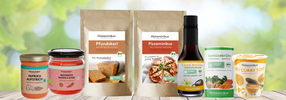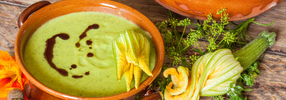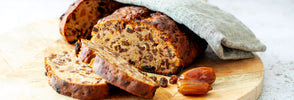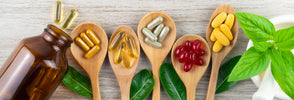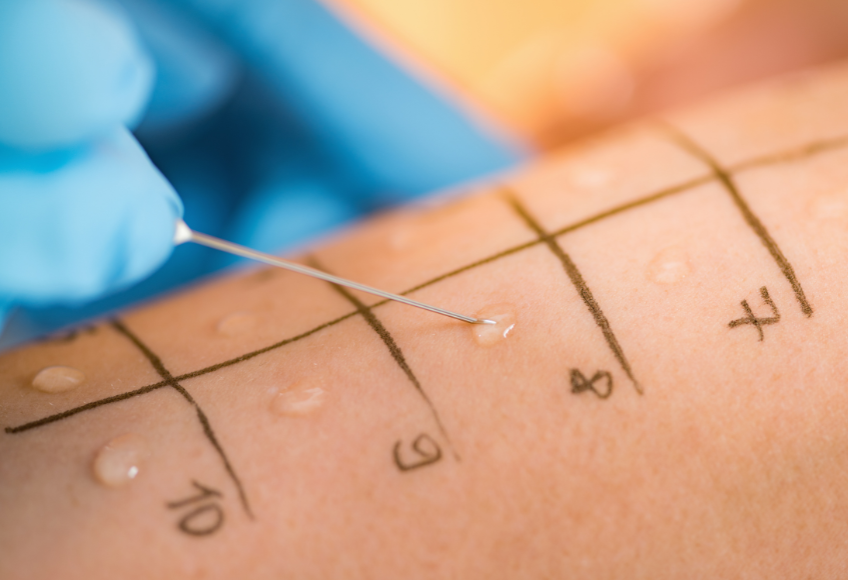
Nickel allergy
Nickel is an essential trace element that the body needs for the function of certain enzymes. However, it can be harmful in higher quantities. If nickel is absorbed through the food, it gets into the blood, binds to certain proteins, is partially stored and partly excreted through the urine. In high concentrations, nickel can generally irritate the skin in almost every person. With a nickel allergy, however, a small amount is sufficient to trigger an inflammatory skin reaction (eczema).
What is a nickel allergy?
A nickel allergy is a hypersensitivity of the immune system compared to the metal nickel. Nickel is a frequently used metal that occurs in many everyday objects - from jewelry to watches to glasses frames. It is one of the most common contact allergies and affects about 15% of the population. Typically, the skin reacts when contacted with nickel -containing objects with redness, itching or eczema. This type of allergy belongs to the group of type IV allergies, which are cell-mediated reactions, which are often only visible hours to days after contact.
Nickelions are actually so small that the skin's immune system does not recognize them directly. But nickel can connect to certain proteins in the body - and that is exactly what makes it problematic. This connection can activate special defense cells in the skin, which then distribute inflammatory messenger substances. The result: an allergic reaction in the form of eczema exactly in the places that came into contact with nickel. Even small amounts of nickel can be enough to trigger such a skin reaction. Fortunately, the skin changes are usually rather mild to moderate and are often accompanied by slight itching. In addition, nickel can be loosened by sweat and thereby picked up even more easily over the skin. Anyone who has already damaged or sensitive skin also has a higher risk of developing a nickel allergy.
👄 Oral nickel allergy
In addition to contact allergy, there is also oral nickel allergy. Symptoms occur after eating nickel food. This form is less common and affects about 2–10% of the nickel allergy sufferers.
Typical symptoms of oral nickel allergy:
- Gastrointestinal complaints such as nausea, diarrhea or constipation
- Skin reactions such as eczema or itching
- Fatigue and general malaise
- Headache or migraine
These symptoms can resemble histamine intolerance, which can make the diagnosis difficult.
🥜 nickel in food
Nickel is contained in many foods, whereby the content varies depending on food. Particularly high nickel concentrations can be found in:
- oatmeal
- cocoa
- Legumes
- Nuts
- Seed
- Whole grain products
- Coffee
- Shells of fruit and vegetables
A low -nickel diet can help relieve symptoms. However, a completely nickel -free diet can hardly be implemented and could lead to nutrient defects.
Share information about your brand with your Customers. Describe A Product, Make Announcements, Or Welcome Customers to your Store.
Diagnostics of nickel allergy
An epicutant test (patch test) is often carried out to diagnose nickel allergy. Here, possible allergens are applied to the skin to observe reactions. If an oral nickel allergy is suspected, a lymphocyte transformation test (LTT) can also make sense in order to demonstrate sensitization of the immune system to nickel.
Share information about your brand with your Customers. Describe A Product, Make Announcements, Or Welcome Customers to your Store.
Connection between nickel allergy and histamine intolerance
Histamine intolerance and nickel allergy have some similarities - both with the trigger and in the symptoms. This has prompted researchers and doctors to examine more closely whether there is a connection between these two illnesses.
Certain foods contain a lot of histamine and nickel - this includes, for example, chocolate, nuts and soy products. Those who are sensitive to histamine and nickel could be increased by consuming these foods. In addition, the symptoms of both diseases are similar: rashes, digestive problems and headaches occur in both histamine intolerance and systemic nickel allergy. This often makes it difficult to find out exactly which of the two intolerances behind the symptoms.
Share information about your brand with your Customers. Describe A Product, Make Announcements, Or Welcome Customers to your Store.
Image with text
You are what you eat!
Our mission is to develop delicious food according to in -house recipes that are not only low -histamine and gluten -free, but also taste really tasty.
Nickel allergy nutrition - what you should consider
In most cases, people with a nickel allergy do not have to drastically change their diet. However, if there is an oral nickel allergy and complaints worsen after eating certain foods, it may make sense to try out a low -nickel diet in consultation with the doctor. Not only the selection of food is crucial, but also the type of preparation.
💡 Tips for reducing nickel in the kitchen:
- Broching coffee by hand instead of using coffee or espresso machines because they can release more nickel.
- Use kettle without an open heating spiral, especially after descaling to avoid a higher nickel release into the water.
- Let the tap water take place before use, especially if it stood in the pipes for longer (let about 0.5 liters flow).
- Use nickel -free cookware, for example made of enamel, glass, porcelain or nickel -free stainless steel.
Do not store or prepare acidy dishes in metal vessels, since acid can solve nickel from the material. Better switch to glass or porcelain ranges.
Peel fruit and vegetables to reduce the nickel content.
💡 How does the changeover go to a low -nickel diet?
The change in diet is gradually and under medical guidance:
1. Entry phase: A strictly nickel -poor diet is observed for two to six weeks. The doctor defines the exact duration.
2. Provocation test: Then a one -time nickel gift is carried out to test whether and how much symptoms occur.
3. Reintroduction of individual foods: Gradually, foods with a higher nickel content are added to the menu. It is closely observed which amounts trigger or reinforce symptoms.
👉🏼 Nickel is contained in many foods. A consistently low -nickel diet often means a large change and should therefore only take place in close consultation with the treating doctor in order to rule out malnutrition!
Share information about your brand with your Customers. Describe A Product, Make Announcements, Or Welcome Customers to your Store.
Collapsible content
SOURCES
- https://www.mein-allergie-portal.com/nahrungsmittelallergie-und-unvertraeglichkeiten/627-nickelallergie-orale-nickelallergie-sind-nickelarme-diaeten-noetig.html
- https://www.imd-berlin.de/spezielle-kompetenzen/nahrungsmittelshyunvertraeglichkeiten/typ-iv-allergie
- https://www.nickelallergylifestyle.com/post/what-s-the-link-histamine-intolerance-and-nickel-allergy
- https://www.apotheken-umschau.de/krankheiten-symptome/allergien/nickelallergie-733789.html#behandlung
- https://www.histameany.de/der-einfluss-von-nickel-auf-die-histaminintoleranz/

From those affected for those affected
We are Thomas and Michaela Zinser, founder of Histaminikus.
Because of the own histamine intolerance of Michaela and our son, we founded Histaminikus. The frustration does not find any suitable histamine food has spurred us to develop low -histamine food.
We would like to give you back a piece of quality of life. Feel free to look around with us.
Kind regards
Thomas and Michaela

